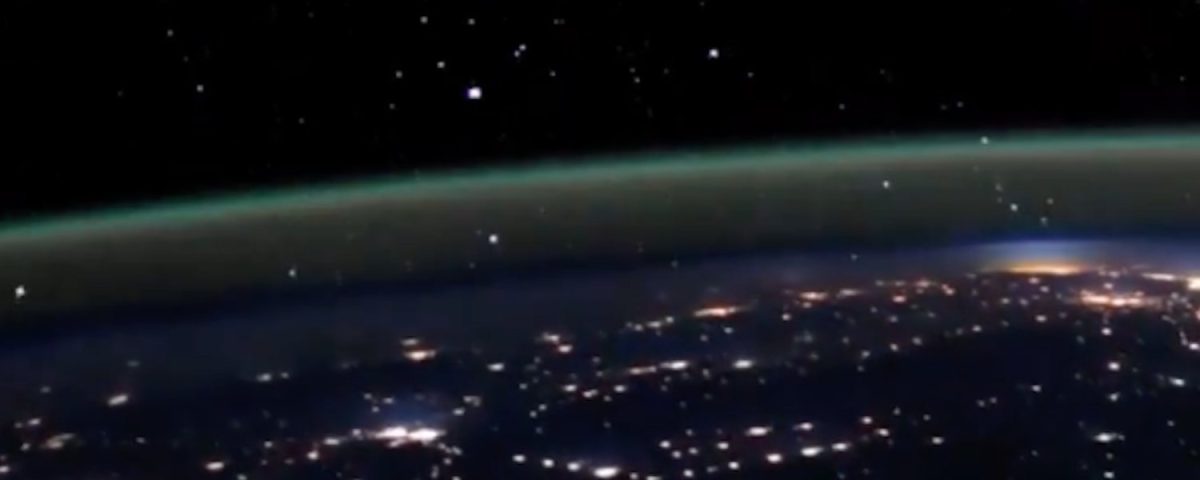‘Cosmic Fireflies’ Spotted From the ISS Turn Out to Be a Total Buzzkill
‘Cosmic Fireflies’ Spotted From the ISS Turn Out to Be a Total Buzzkill
The flying specks of light are Starlink satellites, far from a celestial wonder.
Full Article
A NASA astronaut captured brilliant specks of light floating above Earth’s horizon, dancing around in space. But rather than this being a celestial wonder, it’s actually a human-made phenomenon taking over Earth’s orbit. Earlier this week, astronaut Don Pettit shared a video he had captured while on board the International Space Station (ISS). The video showed a group of flickering objects flying 250 miles (400 kilometers) above Earth’s surface. Pettit referred to the breathtaking scene as “cosmic fireflies” before giving us a reality check of what those glimmering lights are. “Actually, these are Starlink satellites momentarily flashing sunlight towards the [ISS],” Pettit wrote. Cosmic fireflies. Actually, these are Starlink satellites momentarily flashing sunlight towards @Space_Station. pic.twitter.com/rOKUdLlP3f — Don Pettit (@astro_Pettit) December 1, 2024 Bummer, right? The video that initially inspires cosmic wonder is actually a reflection of the reality of low Earth orbit today, littered with human-made objects that interfere with its natural beauty. SpaceX first started launching its Starlink satellites in 2019 as a way to beam connectivity to remote areas or areas where internet connection is not reliable. There are more than 6,700 Starlinks currently in orbit, and that number is only increasing as SpaceX uses its Falcon 9 rocket to launch batches of the satellites to low Earth orbit. The orbiting satellites have astronomers worried as they add a lot of noise to images captured by ground-based observatories, which they do by reflecting sunlight the same way that appears in Pettit’s video. The satellites mess with scientific data, appearing as bright streaks in astronomical images. This is only the beginning as SpaceX wants to launch upwards of 42,000 of its internet satellites to orbit, although so far the Federal Aviation Administration has granted the company approval to launch 12,000 Starlinks. And that’s not to speak of other pending megaconstellations, including China’s “Thousand Sails” initiative, which could include upwards of 13,000 satellites. Earlier this year, SpaceX began launching direct-to-cell (DTC) Starlink satellites, which are five times brighter than the rest of the broadband constellation, a recent study found. The DTC satellites, according to the study, may appear brighter due to their lower altitude. Regular Starlink satellites orbit at an altitude of 340 miles (550 kilometers) above Earthâs surface, while their DTC equipped counterparts orbit at a much closer distance of 217 miles (350 kilometers). Satellites in low Earth orbit circle the planet once every 90 minutes, and appear wider, or out of focus, when seen through telescopes, which further dilutes their light. SpaceX is working with the International Astronomical Union and other astronomy groups on ways to mitigate Starlink’s interference with observations of the cosmos by reducing their reflectivity either by changing the orientation of the solar panels or installing a “sunshade” on the satellites. Those ideas are still in progress, and SpaceX isn’t slowing down on building its megaconstellation in the meantime.
international space stationNASASPACEXStarlink
Get the best tech, science, and culture news in your inbox daily.
News from the future, delivered to your present.
Please select your desired newsletters and submit your email to upgrade your inbox.
The spacecraft survived scorching temperatures at a record proximity, and is expected to send details of its close call in the new year.
Parker Solar Probe will break its silence on Fridayâthat is, if it survived its closest approach to the Sun.
Oh yeah, Palmer Luckey’s in the mix too.
The Orion crew capsule is designed to jettison away from the SLS rocket in a launch abort scenario.
At 3.8 million miles from the Sun’s surface, Parker Solar Probe will be the closest a human-made object’s ever been to our host star.
The space agency is looking to maintain human presence in the microgravity environment as it transitions to commercial stations.
The Best Tech Gifts of 2024 â We may earn a commission when you buy through links on our sites.
©2024 GIZMODO USA LLC. All rights reserved. Mode
Follow us
Mode
Follow us



